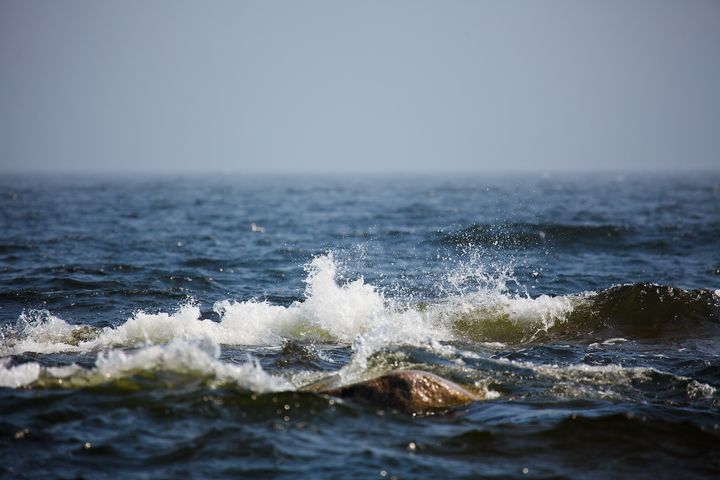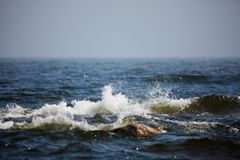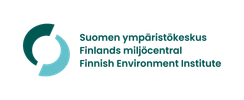Windy weather has restrained blue-green algae blooms
The number of blue-green algae observations in lakes and coastal areas has decreased, due to the windy weather this week. Comprehensive satellite observations in sea areas have not been obtained, because of the cloudy weather, but the winds have mixed the blue-green algae surface blooms into the deeper water layers, also in the sea.

Link to the map
Map of the national blue-green algae monitoring observations on week 29
More in Finnish
Tuulinen sää hillinnyt sinileväkukintoja
Syke observes the cyanobacteria occurrence as part of the monitoring of the state of the environment in Finland
The national cyanobacterial monitoring is carried out as part of the monitoring of the state of the environment in cooperation with the Centres for Economic Development, Transport and the Environment, municipal environmental and health authorities, and the Finnish Environment Institute (Syke). Finnish Rotary Clubs are also actively involved in nationwide cyanobacterial monitoring.
The cyanobacterial monitoring is based on the monitoring of cyanobacterial deposits in surface water. The intention is to provide an overview of the cyanobacterial situation in different water bodies. The monitoring includes about 400 permanent observation sites across the country on inland and coastal waters and in the archipelago.
Information on the cyanobacterial situation in the open sea areas is mainly obtained from satellite images, but also from the Finnish Border Guard, the marine research vessel Aranda, the optical device located at the Utö Atmospheric and Marine Research Station, as well as cruise and merchant ships (MS Finnmaid and MS Silja Serenade) equipped with Alg@line measuring equipment. The drift forecasts for cyanobacterial rafts in open sea areas are prepared in cooperation with the Finnish Meteorological Institute's Maritime Services.
Syke reports on the national cyanobacterial situation on a weekly basis every Thursday from the beginning of June until the end of August. The weekly algal reporting was launched in 1998.
Several compounds produced by cyanobacteria can cause health hazards
According to the Finnish Institute for Health and Welfare (THL), cyanobacterial occurrences can cause health hazards. Cyanobacteria produce a number of different compounds that can cause symptoms. Some cyanobacteria can produce liver or nerve toxins, but most of the symptoms experienced by swimmers may also be due to other compounds.
Small children and pets should particularly be kept out of water rich with cyanobacteria. Water with cyanobacteria should not be used in a sauna or as washing or irrigation water.
If you suspect a poisoning, seek medical advice, or take the pet to a veterinarian. If necessary, the Poison Information Centre will provide additional instructions.
The municipal health authorities monitor the cyanobacterial situation on beaches.
More information about blue-green algae and health:
- At the the Finnish Institute for Health and Welfare (THL) website
- At the Poison Information Center website
Report your cyanobacterial observations to the Järvi-meriwiki (Lake and sea wiki)
In Järvi-meriwiki, maintained by the Finnish Environment Institute, you can establish your own observation site and share cyanobacterial observations or make individual observations when moving around waterways. You can also report observations via the smartphone-friendly Havaintolähetti website.
The reported observations are shown on the national cyanobacterial observation map, and they support the national algal situation assessment. Observations about the absence of cyanobacteria are also important.
Järvi-meriwiki is an online service produced in collaboration with authorities and citizens. The service provides basic information on all lakes larger than one hectare as well as different areas of the Baltic Sea. Users can share, for example, photos and other observations on the service.
Municipalities and cities monitor the cyanobacterial situation on the beaches, so it is advisable to report rich cyanobacterial occurrences on beaches to the health authorities of the municipality in question.
This is how you identify cyanobacteria
A small amount of cyanobacteria in the water appears as green or yellowish particles. Narrow stripes of algae can drift to a beach. In calm weather, a substantial amount of cyanobacteria forms greenish or yellowish algal rafts and piles up in coastal water. In spring, yellowish pollen from coniferous trees may also be present in the water. Unlike cyanobacteria, pollen is found not only on the surface water but also, for example, on piers or yard furniture.
Cyanobacteria dissolve into tiny particles in the water if you touch the algal mass with a stick. If the algae become attached to the stick, they are something other than cyanobacteria. In a water vessel, cyanobacteria rise to the surface as tiny greenish particles within about an hour.
- Read more: How do you recognize blue-green algae?
Cyanobacterial observations also in the MarineFinland.fi and Waterinfo.fi services
The cyanobacterial maps presented on the websites MarineFinland.fi and Waterinfo.fi combine the observations reported to the Järvi-meriwiki and from the beaches of the City of Helsinki, as well as the observations based on satellite interpretations made by Syke during the last three days.
Keywords
Contacts
Inquiries about blue-green algae situationTelephone 1 pm to 3 pm
Lakes: Tel +358 50 5734 347 or +358 295 251 326
State of the Baltic Sea: Tel +358 50 5693 297 or +358 295 251 314
Satellite observations: Tel 358 50 4707 576 or +358 295 251 329, e-mail: Eotuki@syke.fi
Tytti JuustiCommunications Intern
Tel:+358 295 252 323firstname.lastname@syke.fiMatti LindholmCommunication Specialist
Tel:+358 295 251 380firstname.lastname@syke.fiImages

Links
It is time to move beyond solving environmental problems one by one, to systemic sustainability transformations. The Finnish Environment Institute (Syke) contributes to building a sustainable society through research, information and services. The Finnish Environment Institute is a research institute with 700 experts and researchers located in Helsinki, Oulu, Jyväskylä and Joensuu.
Subscribe to releases from Suomen ympäristökeskus
Subscribe to all the latest releases from Suomen ympäristökeskus by registering your e-mail address below. You can unsubscribe at any time.
Latest releases from Suomen ympäristökeskus
Arktiset virtavedet ovat herkkiä typpikuormitukselle – kyttyrälohen aiheuttama ravinnelisäys huolestuttaa tutkijoita30.6.2025 11:55:37 EEST | Tiedote
Tuore tutkimus osoittaa, että arktiset virtavedet ovat herkkiä lisääntyvälle typpikuormitukselle kasvukauden ajankohdasta tai joen koosta riippumatta. Havainto herättää huolta, sillä tulevaisuudessa kyttyrälohen voimakas runsastuminen voi lisätä pohjoisten jokien ravinnekuormaa.
Det ostadiga vädret har hållit cyanobakterieläget måttligt26.6.2025 13:09:15 EEST | Pressmeddelande
Situationen med cyanobakterier är fortfarande huvudsakligen lugn, och observationerna i insjöar samt längs kustområden har förblivit få. Det ostadiga vädret under den gångna veckan har försvårat satellitobservationer från öppna havsområden. Enligt automatiska observationer från handelsfartyg har dock mängden cyanobakterier varit något förhöjd i de västra öppna havsområdena i Finska viken.
Unsettled weather has kept the blue-green algae situation moderate26.6.2025 13:05:44 EEST | Press release
The situation with blue-green algae remains mostly calm, and observations in inland waters and along coastal areas have remained few. The unsettled weather over the past week has made satellite observations from open sea areas more difficult. However, according to automatic observations from merchant ships, the amount of blue-green algae has been slightly elevated in the western open sea areas of the Gulf of Finland.
Epävakainen sää on pitänyt sinilevätilanteen maltillisena26.6.2025 13:00:00 EEST | Tiedote
Sinilevätilanne jatkuu pääosin rauhallisena, ja havainnot sisävesillä sekä rannikkoalueilla ovat pysyneet vähäisinä. Kuluneen viikon epävakainen sää on vaikeuttanut satelliittihavaintojen tekemistä avomerialueilta. Kauppalaivojen automaattihavaintojen perusteella sinilevämäärä on kuitenkin ollut lievästi koholla Suomenlahden länsiosan avomerialueilla.
A calm start for the blue-green algae season19.6.2025 13:15:31 EEST | Press release
As typical in early summer, the number of blue-green algae observations is moderate. Some blue-green algae have been observed in inland waters, mainly in Southern Finland. In coastal areas, even slightly less blue-green algae have been detected than typical this time of year. So far, no significant deposits of algae have been observed in offshore areas.
In our pressroom you can read all our latest releases, find our press contacts, images, documents and other relevant information about us.
Visit our pressroom